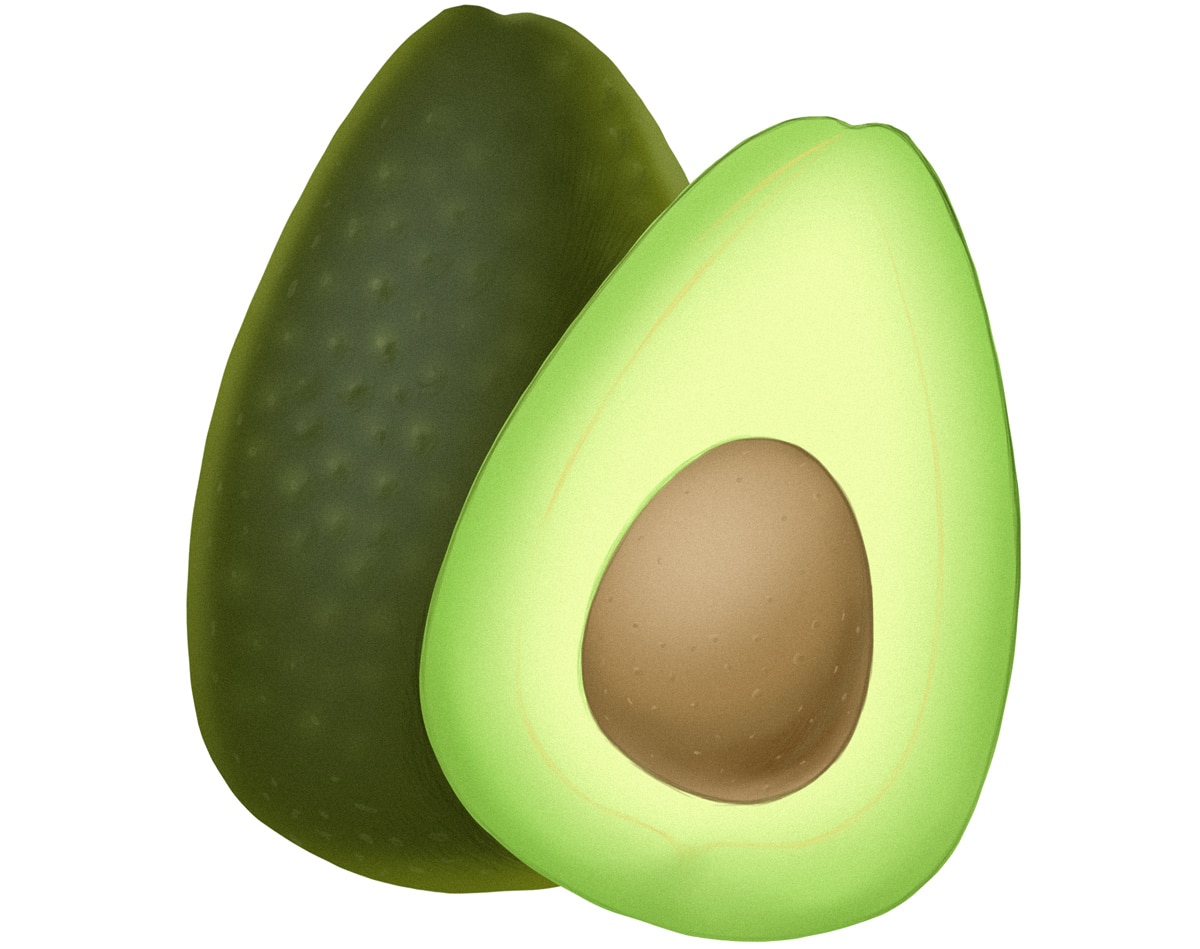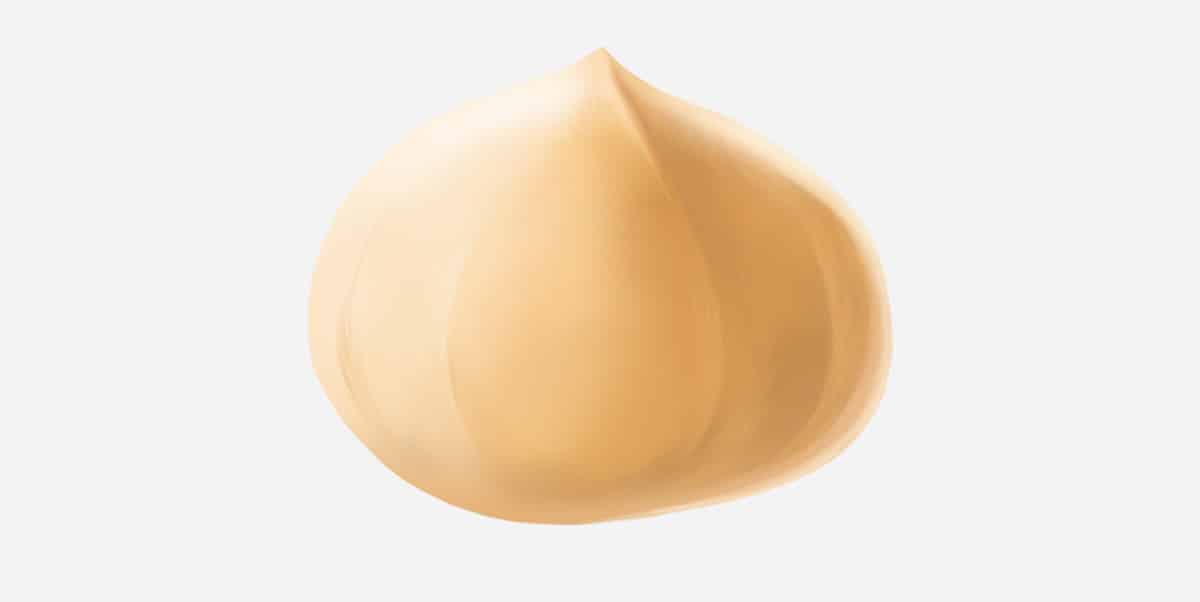Fat: it’s what’s on the menu! For keto eaters, fat should be your primary source of calories, and even for Paleo folks who aren’t doing keto, getting enough fat and getting the right fat will help make your diet more nourishing - and way more delicious.
But with the conventional diet wisdom being so strongly anti-fat, it’s not always easy to find good, nutritious sources of high-quality fat. If you’re lost in the grocery store wondering what to buy, check out these 6 nutritious and delicious high-fat staples. Nobody has to eat any particular one of these foods, much less all of them, but they’re all good to at least consider.
1. Avocados
Per 1 avocado: 2.7 grams of protein, 21 grams of fat, 3 grams of net carbs, and 9 grams of fiber.

Avocados are amazing for Paleo or keto diets for three reasons:
- Lots of the good fat - avocados are rich in monounsaturated fat, the same kind of fat that’s in olive oil. In fact, avocados have an even higher percentage of monounsaturated fat than olive oil.
- Lots of fiber - one avocado has 9 grams of fiber, but only 3 grams of digestible carbs.
- Lots of nutrients - avocados are rich in vitamin E, vitamin C, B vitamins, potassium, magnesium, and more.
Avocado toast is pretty much out on Paleo or low-carb diets (unless you want to get into the Paleo or low-carb bread), but guacamole is delicious with dipping vegetables, and avocados are also good plain with some balsamic vinegar and salt sprinkled on top.
Recipe inspiration:
- Keto baked salmon with avocado salsa
- Avocado, cucumber, and cilantro tuna salad
- Chicken, strawberry, avocado, and spinach salad
2. Pork belly
Per 100 grams of cooked pork belly: 21 grams of fat, 13 grams of protein, and 0 carbs.
Pork belly is what bacon is made of, but in its pre-baconated form, it’s even fattier. Raw pork belly is 92% fat by calories; cooked pork belly is about 78% (since some of the fat renders out while cooking). For comparison, raw bacon is about 86% fat by calories and cooked bacon is about 68%. With all that succulent fat, pork belly is best cooked low and slow, so it has time to crisp up nicely and let at least a little bit of the fat render out.
One caveat: pork fat in general is relatively high in Omega-6 polyunsaturated fats, which can be inflammatory, especially if you aren’t eating enough Omega-3 fats from fish. (Confused by the whole Omega-6/Omega-3 thing? See here for a quick explainer.) Definitely cook it with lots of tasty spices for the anti-inflammatory antioxidant protection - and if you have a lot of inflammation problems, it might be one to skip completely or eat pretty sparingly.
For recipe inspiration try out this quick recipe for keto-friedly salt and pepper pork belly.
3. Duck
Per 100 grams (about 3 ounces) of cooked duck: 19 grams of protein, 28 grams of fat, and 0 grams of carbs
As anyone who’s ever cooked one can attest, domestic ducks are really fatty creatures. There’s a beautiful thick layer of fat on each breast, plus fat deposits around the neck and back. If you roast a normal-sized duck, you’ll get a cup or two of fat that drains off (save that - it’s delicious liquid gold!), and the duck will still be fall-apart tender and decadent. Ducks are also pretty nutritious, and the fat is mostly monounsaturated fat, making this a great choice for people who want a high-fat animal protein but don’t want a lot of Omega-6 PUFA.s
For double duck fat goodness, slowly roast or braise a duck, save the fat, and when it comes time to eat the leftovers, warm them up by frying them in some of the reserved fat. You will still have extra fat: this is delicious with eggs or almost any vegetable. For those eating a medium or high-carb version of Paleo, duck fat is also excellent with sweet or white potatoes.
Recipe inspiration:
4. Macadamia nuts

Per 1 ounce (about a handful): 2 grams of protein, 21 grams of fat,1.6 grams of net carbs, and 2.4 grams of fiber.
Why macadamias, of all the nuts? Mostly because they have a really great fatty acid profile. Most other nuts, including almonds, are pretty high in omega-6 fats. But macadamia nuts have much less omega-6 fat and much more monounsaturated fat, making them a good choice for anyone concerned about omega-6 overload.
Another noteworthy nut option is walnuts. Walnuts have a significant amount of anti-inflammatory Omega-3 fats - and yes, even the plant form of Omega-3 fat in walnuts is pretty bioavailable after all.
Recipe inspiration:
- Cayenne-rosemary roasted nuts
- Apple, walnut, and cranberry-stuffed squash
- Broccoli and apple salad with walnuts
5. Coconut milk OR coconut cream

Coconut milk: Per 2 tbsp.: about 0.7 grams of protein, 7.2 grams of fat, and 1.7 grams of carbs.
Coconut cream: Per 2 tbsp.: about 1.1 grams of protein, 10.4 grams of fat, and 2 grams of carbs.
Everyone knows about coconut oil, but a lot of people neglect the whole range of coconut products.Coconut water has some carbs in it, but the milk is mostly just fat and water, with very few carbs. Coconut cream is just a bit more condensed, so more fat and less water, to the point where you can essentially whip it like whipping cream - yum!
Coconut milk is high in saturated fat - which isn’t actually a nightmare killer nutrient! - and medium-chain triglycerides, which are the most ketogenic fats. And it’s extremely delicious in soups, desserts, marinades, and more.
Recipe inspiration:
- Coconut milk hot chocolate
- Pork loin braised in coconut milk
- Coconut-buttermilk southwestern grilled chicken
- AIP grilled salmon with avocado coconut Sauce - get that coconut milk and some avocado at the same time!
6. Ghee
Per 1 tbsp.: 0 grams protein*, 14 grams of fat, and 0 grams of carbs.
*Technically, there is a tiny amount of dairy protein still in it, but it’s so small it doesn’t matter for nutritional purposes.
Any kind of dairy fat is a great idea for keto if you can tolerate dairy (not everyone can; if you’re lactose intolerant, then just go for other healthy fats and don’t stress about it). But if you can handle dairy, ghee is a great source of dairy fat. Essentially, ghee is like butter, but with more of the milk solids cooked off, so it’s higher in fat and lower in lactose and dairy proteins. Even people who can’t handle butter very well can often tolerate ghee without issues, just because the amount of non-fat in the ghee is so low.
Ghee has a nice, savory, almost nutty flavor that goes really well with almost everything, and it works for cooking at slightly higher heat than butter, thanks to the relative lack of protein and carbs.
Recipe inspiration:
Looking for more grocery help? Check out 5 great low-carb vegetables here. Or join the conversation on Facebook or Twitter: what are your favorite high-fat staples?





Leave a Reply